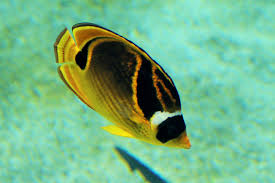
Chinese festivals are not only about vibrant celebrations, traditional performances, and family gatherings but also about food. The significance of food in Chinese culture goes beyond mere nourishment—it carries deep symbolism and meaning, especially during festive occasions. Every dish served during a Chinese holiday is carefully chosen to represent good luck, prosperity, and harmony. From the Chinese New Year to the Mid-Autumn Festival, food plays an essential role in ensuring positive energy (chi) flows through the family and brings good fortune in the coming year.
In this article, we will explore some of the essential foods that cannot be missed during Chinese festivals. These dishes are not only delicious but also carry a deep cultural significance and are believed to bring prosperity, health, and happiness. So, whether you are hosting a traditional Chinese celebration or simply want to understand the role of food in Chinese holidays, this guide will provide you with insights into the foods that are integral to these events.
1. Chinese New Year: A Feast for Prosperity and Happiness
Chinese New Year, also known as the Spring Festival, is the most significant holiday in Chinese culture. Celebrating the beginning of the lunar new year, it is a time for family reunions, honoring ancestors, and welcoming a new year filled with good fortune. Food plays a central role during this time, and the dishes served are carefully chosen to ensure prosperity, wealth, and good health for the family in the coming year.
1.1. Dumplings (Jiaozi)
Dumplings are one of the most iconic foods associated with Chinese New Year. These small pockets of dough filled with various ingredients symbolize wealth and prosperity. The shape of the dumpling is thought to resemble ancient Chinese gold ingots, which were used as currency. Eating dumplings during the new year is believed to bring financial good fortune and wealth.
- Feng Shui Tip: The filling of the dumplings is significant as well. Some families hide a coin inside one of the dumplings, and the person who finds it is said to have extra good luck in the coming year.
1.2. Fish (Yu)
Fish is another essential dish for Chinese New Year, as the word for fish, “yu”, sounds like the word for surplus or abundance in Chinese. Eating fish is believed to ensure that the coming year will be filled with plenty and prosperity. It is typically served whole, as the head and tail represent the beginning and end of the year, symbolizing a smooth, prosperous journey.
- Feng Shui Tip: The fish should not be completely eaten during the meal, as this is believed to leave some prosperity “left over” for the following year.
1.3. Spring Rolls (Chun Juan)
Spring rolls are often served during Chinese New Year celebrations as they resemble gold bars, symbolizing wealth and financial prosperity. These crispy rolls are filled with a variety of ingredients, such as vegetables, meat, or seafood, and are usually enjoyed as an appetizer or side dish.
- Feng Shui Tip: The golden, crispy exterior of spring rolls represents the idea of accumulating wealth throughout the year.
1.4. Nian Gao (Rice Cake)
Nian Gao, or rice cake, is another essential dish for Chinese New Year. This sticky rice cake symbolizes progress and growth, as the word “nian” means “year,” and “gao” means “high” or “tall.” The sticky nature of the rice cake is believed to help strengthen familial ties and ensure stability in the new year.
- Feng Shui Tip: It is common to enjoy this dish with sweet red bean paste, which is also a symbol of good fortune.
2. The Mid-Autumn Festival: A Celebration of Harvest and Unity
The Mid-Autumn Festival (or Moon Festival) celebrates the full moon and the harvest, symbolizing unity, family, and the end of the autumn harvest season. This festival is a time to give thanks for the bounty of the earth and to reunite with family members, especially those who may live far away.
2.1. Mooncakes (Yue Bing)
No food is more iconic during the Mid-Autumn Festival than mooncakes. These round pastries are filled with a variety of ingredients, including red bean paste, lotus seed paste, and salted egg yolks. The round shape of the mooncake symbolizes the full moon and the completeness of family reunion. Mooncakes are traditionally exchanged among friends and family as a gesture of goodwill and blessings.
- Feng Shui Tip: Mooncakes are often gifted in decorative boxes, and their circular shape represents unity and togetherness.
2.2. Pomelos (You Zi)
Pomelos are another essential food during the Mid-Autumn Festival. This large citrus fruit, which is similar to grapefruit, is believed to bring good luck and prosperity. The word “you” in you zi sounds like “having” or “possessing,” symbolizing a wish for good fortune and abundance. Pomelos are often eaten as a snack or dessert after the main meal.
- Feng Shui Tip: Pomelos are sometimes placed on the altar or family dining table to enhance good fortune during the festival.
2.3. Tea (Cha)
Tea is an integral part of the Mid-Autumn Festival, especially as it is often served alongside mooncakes. Oolong tea, jasmine tea, and green tea are popular choices. Tea represents peace, calm, and good health, which are all values celebrated during the festival.
- Feng Shui Tip: The act of sharing tea with family members symbolizes unity and harmony in the home.
3. Dragon Boat Festival: A Tribute to Qu Yuan and Ancient Traditions
The Dragon Boat Festival, celebrated on the 5th day of the 5th month of the lunar calendar, honors the life of the poet and statesman Qu Yuan. The holiday is marked by dragon boat races, eating sticky rice dumplings, and various rituals to ward off evil spirits.
3.1. Zongzi (Sticky Rice Dumplings)
Zongzi are the star food during the Dragon Boat Festival. These sticky rice dumplings are wrapped in bamboo leaves and filled with a variety of ingredients, such as marinated pork, salted egg yolk, and mung beans. The shape of the zongzi is triangular, symbolizing the harmony between the heaven, earth, and human beings. Zongzi is a traditional offering to Qu Yuan, and its preparation and consumption are meant to bring health and good luck.
- Feng Shui Tip: Zongzi are often enjoyed with tea, and their triangular shape symbolizes balance and strength.
3.2. Xiong Wang (Five-Kernel Pastry)
The Xiong Wang, or five-kernel pastry, is another traditional food associated with the Dragon Boat Festival. Made from a mixture of five different seeds, including sunflower seeds, watermelon seeds, and peanuts, this pastry is believed to bring longevity and vitality. The number five is considered lucky, as it represents the five elements in Chinese philosophy: wood, fire, earth, metal, and water.
- Feng Shui Tip: These pastries are often gifted to loved ones, symbolizing a wish for long life and good health.
4. Other Essential Foods in Chinese Festivals
While the foods mentioned above are central to specific Chinese festivals, there are other traditional dishes that are commonly enjoyed throughout various holidays.
4.1. Long Life Noodles (Chang Shou Mian)
Long life noodles are symbolic of longevity and are often eaten during celebrations like birthdays and the Chinese New Year. The length of the noodles symbolizes a long and healthy life, and they are typically served stir-fried or in a broth with vegetables and meat. It is important not to cut the noodles, as doing so is considered bad luck.
4.2. Sweet Rice Balls (Tang Yuan)
Sweet rice balls, or tang yuan, are a popular dessert served during the Lantern Festival (the 15th day of Chinese New Year celebrations) and other family gatherings. The round shape of the rice balls symbolizes reunion and completeness, making them a perfect food for festive occasions.
- Feng Shui Tip: Tang yuan are often filled with sweet fillings like red bean paste or sesame, both of which are considered to bring good fortune and happiness.
Conclusion
Food is an essential part of Chinese festivals, serving not only as a way to celebrate but also as a symbol of good luck, prosperity, health, and unity. From the auspicious dumplings and fish during Chinese New Year to the symbolic mooncakes and pomelos during the Mid-Autumn Festival, each dish carries its own meaning and significance. Understanding the cultural and Feng Shui significance of these foods can help deepen your appreciation for Chinese traditions and bring good fortune to your own celebrations.
Whether you’re hosting a family reunion, preparing a festive meal, or simply sharing food with friends, these traditional dishes will ensure that the spirit of prosperity and happiness is always present at the table. So, the next time you celebrate a Chinese festival, remember to include these essential foods to make the occasion even more meaningful and auspicious.










